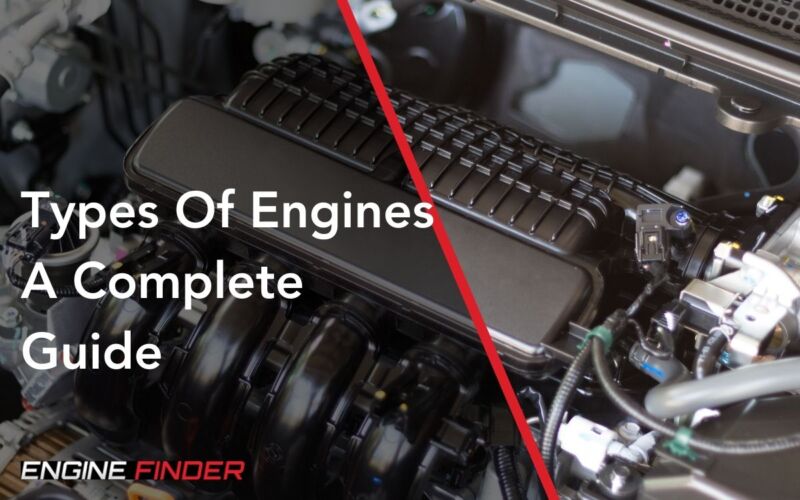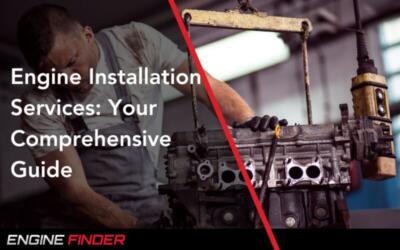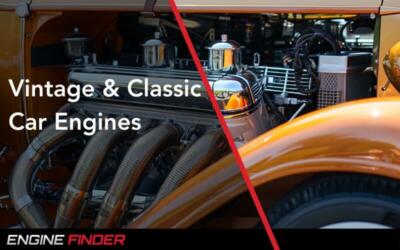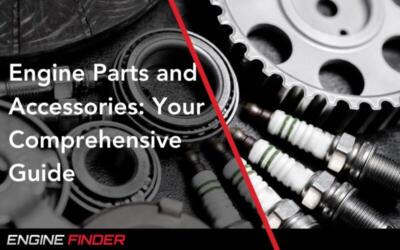Introduction
As an automotive enthusiast, I’ve always been fascinated by the different types of engines that power our vehicles. From the classic V8 engines in muscle cars to the modern electric powertrains in eco-friendly rides, there’s a wide variety of engine types to explore. In this comprehensive guide, I’ll take you through the most common types of automotive engines, their characteristics, and their applications.
Key Information
| Engine Type | Key Takeaways |
|---|---|
| Internal Combustion Engines | – Gasoline and diesel are the two main types – Gasoline engines use a four-stroke cycle and fuel injection – Diesel engines use compression ignition and offer high torque |
| Electric Motors | – Convert electrical energy into mechanical energy – Offer instant torque, quiet operation, and zero emissions – Face challenges like limited range and long charging times |
| Hybrid Engines | – Combine internal combustion engines with electric motors – Available in series, parallel, and plug-in configurations – Provide improved fuel economy, reduced emissions, and regenerative braking |
| Alternative Engine Designs | – Include rotary (Wankel), two-stroke, and unconventional types – Rotary engines are compact and offer high power-to-weight ratios – Two-stroke engines are simpler and lighter than four-stroke designs |
| Engine Performance and Efficiency | – Affected by factors like displacement, compression ratio, and valvetrain design – Can be improved through variable valve timing, cylinder deactivation, and start-stop technology |
| Future of Automotive Engines | – Trends include downsizing, turbocharging, and electrification – Advancements in electric and hybrid technology are driving change – Alternative fuels and new engine designs offer further opportunities |
Noob’s Guide To Car Engine Types
Internal Combustion Engines
Internal combustion engines have been the backbone of the automotive industry for over a century. These engines rely on the combustion of fuel within the engine to generate power. The two main types of internal combustion engines are gasoline and diesel.
Gasoline Engines
- Four-stroke cycle: Gasoline engines typically operate on a four-stroke cycle, which includes intake, compression, power, and exhaust strokes.
- Fuel injection systems: Modern gasoline engines use sophisticated fuel injection systems to optimize performance and efficiency.
- Naturally aspirated vs. forced induction: Gasoline engines can be naturally aspirated or equipped with forced induction systems like turbochargers or superchargers for increased power output.
Diesel Engines
- Compression ignition: Diesel engines use compression ignition, where the air in the cylinder is compressed to such a high degree that it ignites the injected diesel fuel.
- Advantages and disadvantages: Diesel engines are known for their high torque output and fuel efficiency, but they can be noisier and produce more emissions than gasoline engines.
- Common applications: Diesel engines are commonly found in trucks, buses, and heavy machinery, as well as some passenger vehicles.
Electric Motors
Electric motors are becoming increasingly popular in the automotive world as consumers and manufacturers focus on reducing emissions and improving efficiency. These motors convert electrical energy into mechanical energy to propel the vehicle.
| Advantages of Electric Motors | Challenges of Electric Motors |
|---|---|
|
|
Hybrid Engines
Hybrid engines combine the benefits of internal combustion engines and electric motors to improve fuel efficiency and reduce emissions. There are several types of hybrid systems, each with its own unique characteristics and advantages.
Series Hybrid Systems
- In series hybrid systems, the internal combustion engine is used to generate electricity for the electric motor, which then powers the wheels.
- The engine is not directly connected to the drivetrain, allowing it to operate at its most efficient speed.
Parallel Hybrid Systems
- Parallel hybrid systems allow both the internal combustion engine and the electric motor to directly power the wheels simultaneously or independently.
- This configuration offers more flexibility in power delivery and can be more efficient than series hybrids in certain driving conditions.
Plug-in Hybrids
- Plug-in hybrid vehicles (PHEVs) feature larger battery packs that can be charged from an external power source, allowing them to operate in all-electric mode for extended periods.
- When the battery is depleted, the internal combustion engine takes over, providing a seamless transition between electric and hybrid operation.
Advantages of Hybrid Technology
- Improved fuel economy compared to traditional internal combustion engines
- Reduced emissions, especially in urban driving conditions
- Regenerative braking systems that capture energy during deceleration
- Smooth and quiet operation in electric mode
Alternative Engine Designs
While internal combustion engines dominate the automotive industry, several alternative engine designs offer unique benefits and challenges.
Rotary (Wankel) Engines
- Design and operation: Rotary engines use a triangular rotor that rotates within an oval-shaped housing, creating combustion chambers that generate power.
- Pros and cons: Rotary engines are compact, lightweight, and offer high power-to-weight ratios. However, they can be less fuel-efficient and have higher emissions compared to traditional piston engines.
Two-Stroke Engines
- Differences from four-stroke engines: Two-stroke engines complete the power cycle in just two piston strokes, resulting in a simpler design and higher power output for a given displacement.
- Applications in small vehicles and tools: Two-stroke engines are commonly found in motorcycles, scooters, and small off-road vehicles, as well as in handheld tools like chainsaws and leaf blowers.
Unconventional Engine Types
- Stirling engines: These external combustion engines use a sealed working fluid, typically hydrogen or helium, to generate power through a heat exchange process.
- Gas turbines: Primarily used in aircraft and power generation, gas turbines have been adapted for use in some high-performance vehicles and concept cars.
- Experimental designs: Researchers continue to explore new engine concepts, such as opposed-piston engines and split-cycle engines, in pursuit of improved efficiency and reduced emissions.
Engine Performance and Efficiency
Several key factors influence an engine’s performance and efficiency, and manufacturers employ various techniques to optimize these aspects.
Key Factors Affecting Engine Performance
- Displacement and cylinders: Larger displacements and more cylinders generally result in higher power output but can also impact fuel efficiency.
- Compression ratio: Higher compression ratios can improve engine efficiency and power but may require higher-octane fuel to prevent knocking.
- Valvetrain design: The configuration and operation of the valvetrain, such as overhead camshafts and variable valve timing, can significantly affect engine performance and efficiency.
Techniques for Improving Engine Efficiency
- Variable valve timing: By adjusting the timing of valve opening and closing based on engine speed and load, variable valve timing can optimize performance and efficiency across a wide operating range.
- Cylinder deactivation: In engines with a large number of cylinders, selectively deactivating some cylinders during light load conditions can improve fuel economy without sacrificing performance.
- Start-stop technology: Automatically shutting off the engine when the vehicle is stationary and restarting it when the accelerator is pressed can significantly reduce fuel consumption and emissions in city driving.
Future of Automotive Engines
As the automotive industry evolves, several trends and advancements are shaping the future of engine technology.
Trends in Engine Downsizing and Turbocharging
Manufacturers are increasingly turning to smaller, turbocharged engines to improve fuel efficiency without compromising performance. This trend, known as engine downsizing, allows for lighter vehicles and reduced emissions while maintaining satisfactory power output.
Advancements in Electric and Hybrid Technology
The continued development of electric powertrains and hybrid systems is driving significant changes in the automotive landscape. Improvements in battery technology, charging infrastructure, and power electronics are making electric and hybrid vehicles more practical and appealing to consumers.
Potential for Alternative Fuels and New Engine Designs
Researchers and engineers are exploring the potential of alternative fuels, such as hydrogen, biofuels, and synthetic fuels, to reduce the environmental impact of transportation. Additionally, novel engine designs, like opposed-piston engines and split-cycle engines, may offer further improvements in efficiency and emissions reduction.
Conclusion
In this comprehensive guide, we’ve explored the main types of automotive engines, including internal combustion engines, electric motors, hybrid powertrains, and alternative engine designs. By understanding the key characteristics, advantages, and challenges of each engine type, you can make informed decisions when selecting a vehicle or considering upgrades.
As the automotive industry continues to evolve, ongoing innovation in engine technology will be crucial in addressing the pressing issues of fuel efficiency, emissions reduction, and sustainable transportation. By staying informed about the latest developments in engine technology trends, you can better appreciate the exciting future of automotive propulsion.
For more information on specific engine components and systems, be sure to explore our in-depth articles on engine cooling systems, fuel systems, and emission control technologies. At Used Engine Finder, we’re committed to providing valuable insights and resources to help you make the most of your vehicle’s powerplant.




